Germination
Germination is the process by which a seed begins to grow into a new plant. It is the first stage in the life cycle of a plant and involves the seed absorbing water and nutrients, and then beginning to sprout and grow.
Stages of Germination
- Water Absorption: The first step in germination is the absorption of water by the seed. This triggers the metabolic processes within the seed and causes it to swell.
- Activation of Enzymes: Once the seed has absorbed enough water, enzymes within the seed are activated. These enzymes break down stored food in the seed to provide energy for the growing plant.
- Root Growth: The embryo inside the seed begins to grow a root, which anchors the plant into the soil and absorbs water and nutrients from the environment.
- Shoot Growth: As the root develops, a shoot also begins to grow upwards, eventually breaking through the soil surface and becoming the stem and leaves of the new plant.
Factors Affecting Germination
Several factors can affect the germination of seeds, including:
- Water: Seeds need to absorb water to begin the germination process. Without enough water, germination may be delayed or prevented.
- Temperature: Different plants have different temperature requirements for germination. Some seeds may require warm temperatures, while others may need cold temperatures to germinate.
- Oxygen: Like all living organisms, seeds require oxygen for their metabolic processes. Adequate oxygen in the soil is essential for germination.
- Light: Some seeds require light to germinate, while others may germinate in darkness. The presence or absence of light can affect the germination of certain seeds.
Study Guide for Germination
To better understand the process of germination, you can conduct a simple experiment using different types of seeds to observe the factors that affect germination. Here are the steps for your experiment:
- Choose two or more different types of seeds, such as beans, peas, or sunflower seeds.
- Prepare several containers with soil or paper towels for each type of seed.
- Label each container with the type of seed and the variable you want to test (e.g., water, temperature, light).
- Water each container according to your experimental design and place them in different environmental conditions (e.g., one with light, one in a warm place, one in a cold place).
- Observe and record the germination process over several days, noting any differences in germination rates or patterns between the different conditions.
- Conclude and discuss your findings, and consider what factors might have influenced the germination of the seeds in each condition.
By conducting this experiment, you will gain a better understanding of the factors that affect germination and how different seeds respond to their environment.
.◂Science Worksheets and Study Guides Second Grade. Mammals and birds
Study Guide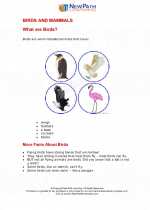 Mammals and birds
Mammals and birds  Activity Lesson
Activity Lesson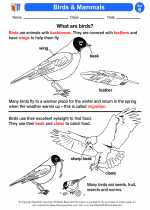 Birds & Mammals
Birds & Mammals  Worksheet/Answer key
Worksheet/Answer key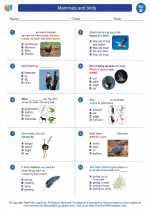 Mammals and birds
Mammals and birds  Worksheet/Answer key
Worksheet/Answer key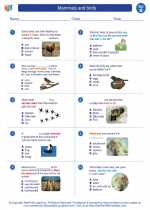 Mammals and birds
Mammals and birds  Worksheet/Answer key
Worksheet/Answer key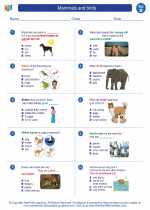 Mammals and birds
Mammals and birds  Worksheet/Answer key
Worksheet/Answer key Mammals and birds
Mammals and birds  Vocabulary/Answer key
Vocabulary/Answer key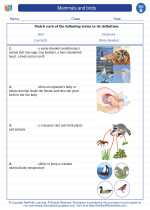 Mammals and birds
Mammals and birds 

 Activity Lesson
Activity Lesson
 Worksheet/Answer key
Worksheet/Answer key
 Worksheet/Answer key
Worksheet/Answer key
 Worksheet/Answer key
Worksheet/Answer key
 Worksheet/Answer key
Worksheet/Answer key
 Vocabulary/Answer key
Vocabulary/Answer key

The resources above cover the following skills:
LIFE SCIENCE (NGSS)
Biological Evolution: Unity and Diversity
Students who demonstrate understanding can:
Make observations of plants and animals to compare the diversity of life in different habitats[Clarification Statement: Emphasis is on the diversity of living things in each of a variety of different habitats.] [Assessment Boundary: Assessment does not include specific animal and plant names in specific habitats.]